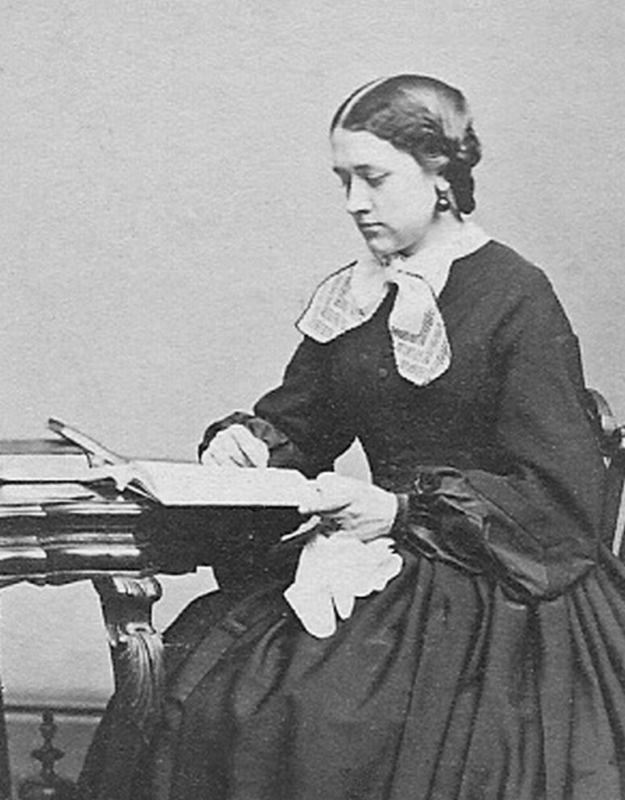by Tom Matthews
“America is now wholly given over to a damned mob of scribbling women” were the famous, spiteful words of Nathaniel Hawthorne in a letter to his editor, William D. Ticknor. Hawthorne was incensed at the success of Maria S. Cummins’s novel, The Lamplighter, published in 1854. “What is the mystery of these innumerable editions of The Lamplighter,” grumbled Hawthorne, “and other books neither better nor worse?”
Granted, this was the nineteenth century; Hawthorne’s question was probably circulating the minds of many competing writers. His term, “damned mob of scribbling women,” was a clear attack on the significance and credibility of women’s writing, yes, but it may also be that Hawthorne was perplexed as to how this “mob” was achieving such success.

Nathaniel Hawthorne / Photo. Photograph. Encyclopædia Britannica ImageQuest. Web. 15 Sep 2015.
Like Uncle Tom’s Cabin, The Lamplighter was a bestselling novel published by John P. Jewett. Although forgotten now, the novel was a huge success in its time, a success commonly accredited to the savvy marketing of Jewett.
Jewett began the marketing campaign with advertisements that explicitly predicted the success of the novel. ‘A GREAT BOOK COMING,’ Jewett announced, noting his company had “in press, and will publish about the First of March, a work of extraordinary power and ability, one which will rank among the very best productions of American or Foreign Genius.” It is interesting to note that Jewett says nothing about the author, giving the work an air of inherent mystery.
Ironically, Cummins’ acceptance of this anonymity was a submission to the very marginalization of women highlighted and challenged in the novel. This doesn’t mean, however, that Cummins was a hypocrite. At the time, male writers dominated the American literary world, and female writers faced much more difficulty having their work published and taken seriously. Cummins’s decision to agree to anonymous advertisement can be seen as a sacrifice in order for her work to receive fair and equal treatment. She may have felt such a sacrifice was the only way to give voice to the ideals she felt were unrepresented in American literature.

Maria S. Cummins / Wikipedia
Cummins was unknown before The Lamplighter, and Jewett feared the novel would flop if the public knew its author was an unpublished woman. His advertisements piqued interest in the novel, as he hoped. Cummins’ anonymity did not last long, however, and she was asked to contribute to several Massachusetts newspapers. So Jewett’s strategy not only garnering interest in the novel but also (unintentionally) created a demand for Cummins’ writing.
The novel achieved bestselling status and was released in multiple editions, targeted at a wide-ranging audience. Scholar Susan Williams writes, “Soon after The Lamplighter was published in 1854, it became readily available in a variety of formats: children could enjoy a picture book with a heavily abridged plot; art lovers could admire sumptuously illustrated editions; and travelers throughout England and Europe could purchase inexpensive railroad editions.” This ensured an audience beyond that of middle-class American women.
The book’s success was more than a financial one. Cummins not only produced a quality story with The Lamplighter but also created an activity for women that was entertaining and full of value—one that women could feel satisfied engaging in. “This cult of domesticity sanctioned reading,” writes Williams, “especially for women, as a productive way to fill one’s leisure time: to read a female Bildungsroman such as The Lamplighter was to participate in an activity that combined entertainment with the inculcation of virtue.”
Hawthorne was merely playing his part in a literary period of elitism that looked down on bestsellers. This highbrow literary elitism, although very much alive in the nineteenth century, did not affect readers’ response to The Lamplighter or their perceived literary value of the novel.
It may also be that Hawthorne felt his publisher was not as competent as Jewett and that he was losing sales. Williams points out that Hawthorne’s publisher was a competitor of Jewett and suggests, “Hawthorne may also have been diplomatically questioning the comparably poor performance of his own chosen publisher.”
With The Lamplighter, Maria S. Cummins claimed a place for women in the literary market. Furthermore, it both proved that women are more than capable of producing valuable work and paved the way for future women writers. Whether Jewett knew it or not, he was part of something significantly bigger than a successful marketing campaign.
Photo credits:
Contributing Editor, Tom Matthews, is a Senior at Clark University where he majors in English, specializing in Creative Writing and Journalism.
Follow @writtenbytom !function(d,s,id){var js,fjs=d.getElementsByTagName(s)[0],p=/^http:/.test(d.location)?’http’:’https’;if(!d.getElementById(id)){js=d.createElement(s);js.id=id;js.src=p+’://platform.twitter.com/widgets.js’;fjs.parentNode.insertBefore(js,fjs);}}(document, ‘script’, ‘twitter-wjs’);
